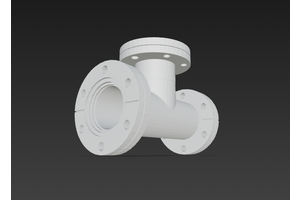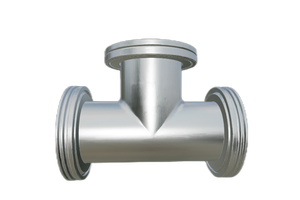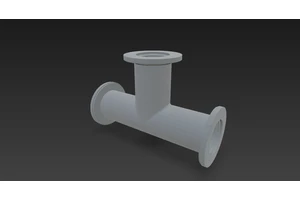Common calculation formulas for vacuum physics and vacuum
1. Boyle's Law: When the temperature remains constant, the relationship between gas pressure P and volume V is P · V=constant, that is, P1/P2=V2/V1.
2. Gay Lussac's law: When the pressure P is constant, the volume V of the gas is proportional to the absolute temperature T, such as V1/V2=T1/T2=constant. For every 1 ℃ increase (or decrease), the volume changes by 1/273 times.
3. Charlie's Law: In the case of a constant volume V, the gas pressure P is proportional to T, that is, P1/P2=T1/T2. A temperature change of 1 ℃ results in a corresponding increase or decrease of 1/273 in pressure.
4. Average free path: λ=5 × 10-3/P (cm) describes the average free path of gas molecules.
5. Pumping speed calculation: S=dv/dt (liters/second) or S=Q/P, where Q is flow rate, P is pressure, V is volume, and t is time.
6. Conductivity formula: C=Q/(P2-P1) (liters/second) represents the ability of fluid to pass through a pipeline.
7. Vacuum pumping time: t=8V/S, empirical formula, used to estimate the pumping time from atmospheric pressure to 1 Torr.
8. Maintenance pump selection: S dimension=S front/10, which means the pumping speed of the maintenance pump is one tenth of the pumping speed of the main pump.
9. Estimation of pumping speed of diffusion pump: S=3D2, where D is the diameter of the pump.
10. The pumping speed of the front stage of the Roots pump is S=(0.1~0.2) S, which is related to the pumping speed of the Roots pump.
11. Leakage rate calculation: Q leakage=V (P2-P1)/(t2-t1), involving system leakage rate and pressure changes.
12. Selection of rough pumping speed: S=Q1/P pre, considering pre vacuum degree and leakage rate.
13. Selection of pumping speed for the front stage pump: The front stage pump needs to meet PnSg ≥ PgS to ensure the working requirements of the main pump.
14. The formula for the pumping speed of a diffusion pump is S=Q/P=(K · n)/(P · t), which is related to the rise of the oil column, pressure, and time.
15. Vacuum pumping speed of rotary vane: S=π ZnLKv (D2-d2)/(24 × 104), considering factors such as the number of rotary vanes and rotational speed.
16-17. Rubber groove depth calculation: O-groove B=0.7D, square groove B=0.8A, and the relationship between groove width C and groove depth is clear.
Extended Information
The theory of studying the physical motion laws of rarefied gases. Theoretical basis of vacuum technology. The main methods used are statistical physics and thermodynamics to study the interactions between molecules in rarefied gases and between molecules and vessel walls. The content includes the fluctuation phenomenon, the deviation of molecular velocity and energy distribution from the normal ideal gas Maxwell distribution, the serious non-equilibrium state involved in vacuum technology, and the interaction between gas and solid surfaces. Fundamentals of Vacuum Physics





